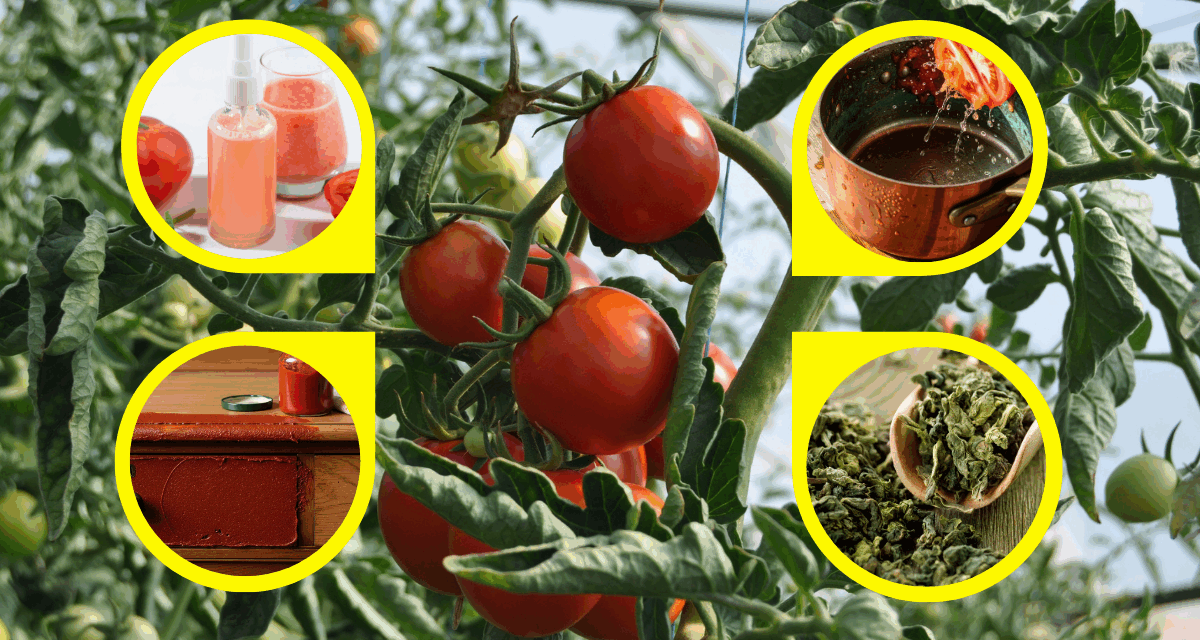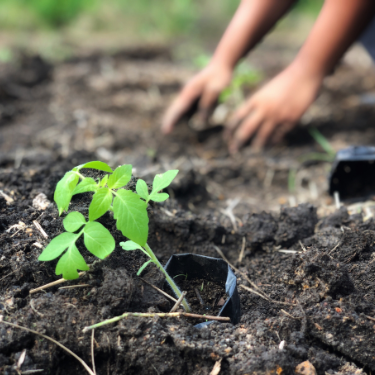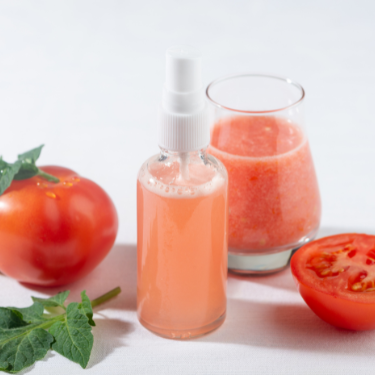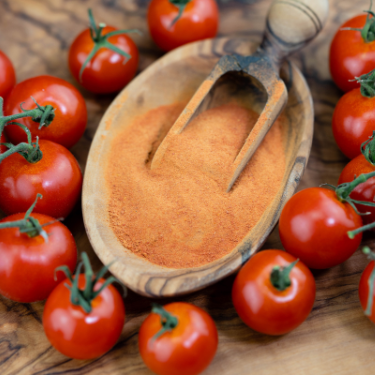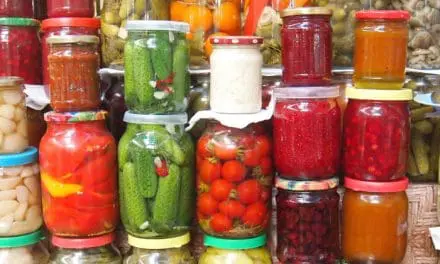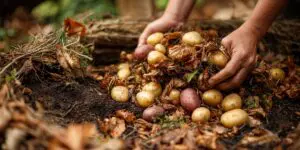If you grow tomatoes on your homestead, you probably already know how wonderful they taste fresh off the vine. But tomatoes are way more than just a tasty treat for your table. Around the homestead, they can be used in all sorts of clever and practical ways, from helping your garden stay healthy to tackling common chores and even making homemade remedies.
I’ve found that these bright, juicy fruits are some of the most versatile helpers you can grow or buy. Whether you have a big garden full of tomatoes or just a few plants here and there, there are plenty of fast and easy uses that can save you time, money, and effort. And it’s not just about those big, ripe Beefsteak tomatoes, but also green tomatoes and tomatoes of every other size and shape.
So here are 12 ingenious uses for tomatoes around your homestead you’re certainly going to love:
The Garden Helpers
Natural Pest Deterrent
Tomato plants don’t just give us tasty fruit. Their leaves can help keep pesky bugs away from other plants. The smell of tomato leaves is strong and some bugs like aphids and whiteflies don’t like it one bit. You can plant tomatoes near other veggies to help protect them, or even crush some tomato leaves and sprinkle them around to keep pests at bay. It’s a simple, natural way to help your garden stay healthy without using chemicals.
Now, here’s an ingenious trick the Amish use to protect their tomato plants themselves from pests. It’s a simple, all-natural method that keeps bugs away without any harsh sprays or chemicals. This clever secret means fewer bugs, less work for you, and a better harvest to enjoy every single year.
Tomato Leaf Mulch
Instead of throwing tomato leaves away, try using them as mulch in your garden. When you chop them up and spread them around your plants, they help keep the soil moist and stop weeds from growing. Also, as the leaves break down, they add good nutrients back into the soil that your plants love. Just let the leaves dry out a bit first so they don’t carry any plant diseases into your garden.
Green Tomato Feed for Plants
Green tomatoes that aren’t ripe yet don’t have to go to waste! You can chop them up and toss them into your compost pile or even bury them right in your garden. As they rot, they help feed the soil and give your plants a natural boost. Some folks even soak green tomatoes in water to make a simple plant food spray that helps crops grow strong and healthy.
Grow Even More Tomatoes
To harvest tomato seeds, slice the tomatoes and remove the seeds and the pulp. Soak the seeds in a jar with about a ½ cup of water an let sit for 2 weeks to ferment.
Drain the seeds in a strainer to remove any bits of pulp under cold running water. Let the seeds dry in the sun for a week and then store in a paper envelope marked with the date and replant next season.
Kitchen & Food Uses
This is a multi-season experiment starting with those first ripe tomatoes in summer and the final harvest of those unripened green tomatoes before the first frost.
Canned tomatoes
This gets down to the basics. At the end of the season, you have more tomatoes than you know what to do with. The obvious solution is to can them. They keep exceptionally well because they are naturally acidic. But there’s one critical step. Remove the skins.
To easily remove tomato skins, drop them into boiling water for a minute or two.
After a couple of minutes, drop them into a bowl filled with water and ice for another minute. Lift out the tomatoes and the skins will peel off easily. Remove the seeds and drop them into a saucepan and heat them over medium heat for 5 minutes. Stire occasionally and them spoon them into sterilized canning jars and process in a hot water bath for 10 minutes. Seal the caps tighter, label them and they should be good for up to a year or longer if refrigerated.
Stewed tomatoes
Stewed tomatoes are a combination of ingredients including bits of celery, herbs, and onions chopped up and slowly simmered. You can cut the vegetables to any size you want and add salt and pepper to suit your taste. Typical herb combinations include cilantro and parsley. You can eat if from a bowl after simmering or spoon the stew into canning jars and process for 10 minutes in a hot water bath. Seal the jars and they should be good for 6 months or longer if refrigerated.
Fried green tomatoes
You’re heading into fall, and you’ve had a great tomato harvest all summer. Tomorrow there’s a weather prediction for a heavy frost and possibly a hard freeze. You have green tomatoes on many plants, and you know they will be toast in the morning. Harvest them now and make fried green tomatoes.
The reason you are frying them is because green tomatoes are actually toxic. Cooking kills the toxins. Slice them and toss them in flour and the drop them into a mix of an egg and milk and then drop them into a bowl of breadcrumbs. Fry them in oil for a minute or two a side turning once and drain on paper towels. Eat them like you would eat French fries or onion rings.
>>> How to Make the Meal in a Jar That Can Feed You for a Week
Sun dried tomatoes
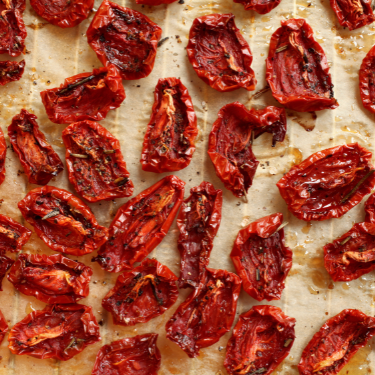
You can actually dry your tomatoes in the sun if you want, but many people use a food dehydrator or even a conventional oven. Curiously, this does not begin with the standard prep of removing the outside skin. You want that. But you should cut or quarter the tomatoes and remove the seeds and pulp. After that you can lightly salt them and either put them in a food dehydrator for 2 to 3 hours or a conventional oven at 125 F for 2 to 3 hours. Check them as you go and taste from time to time. If you actually want to dry them in the sun, place them on baking sheets covered with cheesecloth (that keeps the bugs away) and set them in the sun until done. Here again, taste as you go.
Chop or store them whole in a canning jar and keep refrigerated. They should be good in the fridge up to a month or more.
Tomato Vinegar for Preserving and Cooking
Tomato vinegar is one of those handy homestead staples that you can make right from kitchen scraps. Instead of throwing away tomato peels, cores, and any leftovers, you can turn them into a flavorful vinegar that’s great for pickling, salad dressings, and even natural cleaning around the homestead.
To make tomato vinegar, simply place your tomato scraps in a clean jar and cover them with water and a little sugar to kickstart fermentation. Cover the jar loosely to let air in but keep dust out, and let it sit in a warm spot for a few weeks. You’ll notice bubbles as it ferments and gradually turns into a sharp, tangy vinegar with a subtle tomato flavor.
This homemade vinegar adds a lovely depth to your homemade pickles and dressings and is a great way to reduce waste while creating something useful and delicious.
Household Hacks
DIY Cleaning Agent
Here’s a neat little trick: tomatoes can help clean copper pots and pans until they shine like new. Simply cut a tomato in half and rub it on the tarnished metal, or soak a cloth in tomato juice and use it as a natural cleaner. The acid in tomatoes helps break down grime and leaves your kitchenware gleaming without harsh chemicals.
Tomato Leaves as Natural Insect Repellent
Keep pesky flies and mosquitoes away inside your home by placing dried tomato leaves near doorways or windows. The strong scent of tomato leaves acts as a gentle, natural bug deterrent, helping you keep your home a little more comfortable during those busy summer months.
Tomato-Based Glue for Crafts
If you’re into simple homemade crafts, try making a sticky glue using cooked tomato pulp mixed with a bit of flour. This natural, non-toxic paste works well for paper projects and is a fun way to use up extra tomatoes while keeping craft supplies simple and safe for the whole family.
Speaking of handy homemade glue, there’s an Amish health secret that might just save your life one day. They take a common spice, mix it with water, and create a kind of medical superglue that stops bleeding in seconds. Just apply it to the wound and cover it up. It’s antiseptic too, helping to prevent infection. Here’s how you can make it.
Tomato Paste as Wood Polish
Believe it or not, a small dab of tomato paste can bring out the shine in old wooden furniture. Rub it gently into the wood with a soft cloth, then buff it off to help restore a warm glow to your tables or cabinets.
Tomato Leaf Sachets for Storage Protection
Dried tomato leaves make a simple, natural way to help protect your seeds, grains, or dried beans from unwanted bugs. Just gather some fresh tomato leaves, let them dry completely, then bundle them up into small sachets using breathable fabric or old muslin bags. Tuck these sachets into your seed jars, grain bins, or pantry containers. The strong scent of tomato leaves acts as a gentle insect repellent, helping keep pests like weevils and beetles away.
Homemade Remedies
Tomato Leaf Salve for Bug Bites
If you’re out in the garden or woods and come back with itchy bug bites, a salve made from tomato leaves can help soothe the irritation. Simply infuse chopped tomato leaves in oil for a few weeks, strain, and mix with beeswax to create a gentle balm. It’s a natural way to calm itchy skin using what you can grow.
For tougher issues like boils, splinters, or tick bites, this black drawing salve recipe is another homestead favorite. This thick, healing salve helps draw out impurities and speeds up recovery, and it’s a perfect partner to your tomato leaf balm when you need stronger relief.
Green Tomato Poultice for Swelling
Green tomatoes aren’t just for frying. They’ve been used traditionally as a poultice to reduce swelling and bruises. Wrap a sliced green tomato in a clean cloth and apply it gently to the affected area for relief. It’s a simple, old-fashioned remedy worth keeping in your homestead first aid kit.
Tomato Juice for Heartburn Relief
Believe it or not, some homesteaders use fresh tomato juice to soothe mild heartburn. Drinking a small glass can help neutralize stomach acid naturally. Just be sure to start slow and see how your body reacts, as tomatoes can be acidic for some.
Green Tomato Tincture for Joint Pain
A traditional folk remedy involves making a tincture from green tomatoes to help ease joint pain and arthritis symptoms. The tomatoes are soaked in alcohol for several weeks, then taken in small doses as needed. Always check with a healthcare provider before trying tinctures if you have health concerns.
If making your own green tomato tincture feels a bit tricky or you just want something ready to go, this Joint & Movement Salve is a real gem to keep on hand. It is packed with healing herbs like calendula, arnica, and St. John’s Wort, all known for helping ease joint pain and soothe sore muscles naturally. I love that it’s so easy to use. Just rub it on those achy spots, and you’ll feel the soothing relief start to work its magic, helping you move easier and get back to what matters without being held back by discomfort.
This salve is also included in a limited edition bundle that brings together several natural remedies in one affordable package. If you want even more remedies that work together, and all for about half the price of buying them separately, this bundle saves you money and makes sure you’re prepared for whatever aches and pains come your way. Having it on hand means less stress and more freedom to focus on what matters: your homestead and the life you love.
Tomato Leaf Tea for Digestive Health
Dry tomato leaves and steep them in hot water to make a mild herbal tea. This traditional remedy can help with digestion and soothe an upset stomach. Just be sure to use only a small amount of leaves, as large quantities can be strong.
If you want to give your digestion an extra gentle boost, you can also try this simple herbal tonic that works wonderfully alongside tomato leaf tea. It’s made from only three dried herbs that have long been trusted to calm the stomach and support digestion. Add a touch of honey or maple syrup and fresh lemon juice, and you’ve got a warming, effective tonic that’s perfect after a heavy meal or whenever your stomach needs extra care.
Plant Various Tomato Varieties
Some tomatoes like Beefsteak are great for sandwiches and sun-dried. Others like Roma make great sauces and juices. Early Girl is great for salsas. The more diverse your tomato crop, the more you can do. Better yet, tomatoes are loaded with Vitamin C and lycopene so they’re an excellent nutritional source. Have fun and keep experimenting with all of the things you can do with tomatoes.
No Seeds Needed! How to Grow Tomatoes from a Single Slice
The Herbs You Need to Keep Close During Dark Times (Video)

